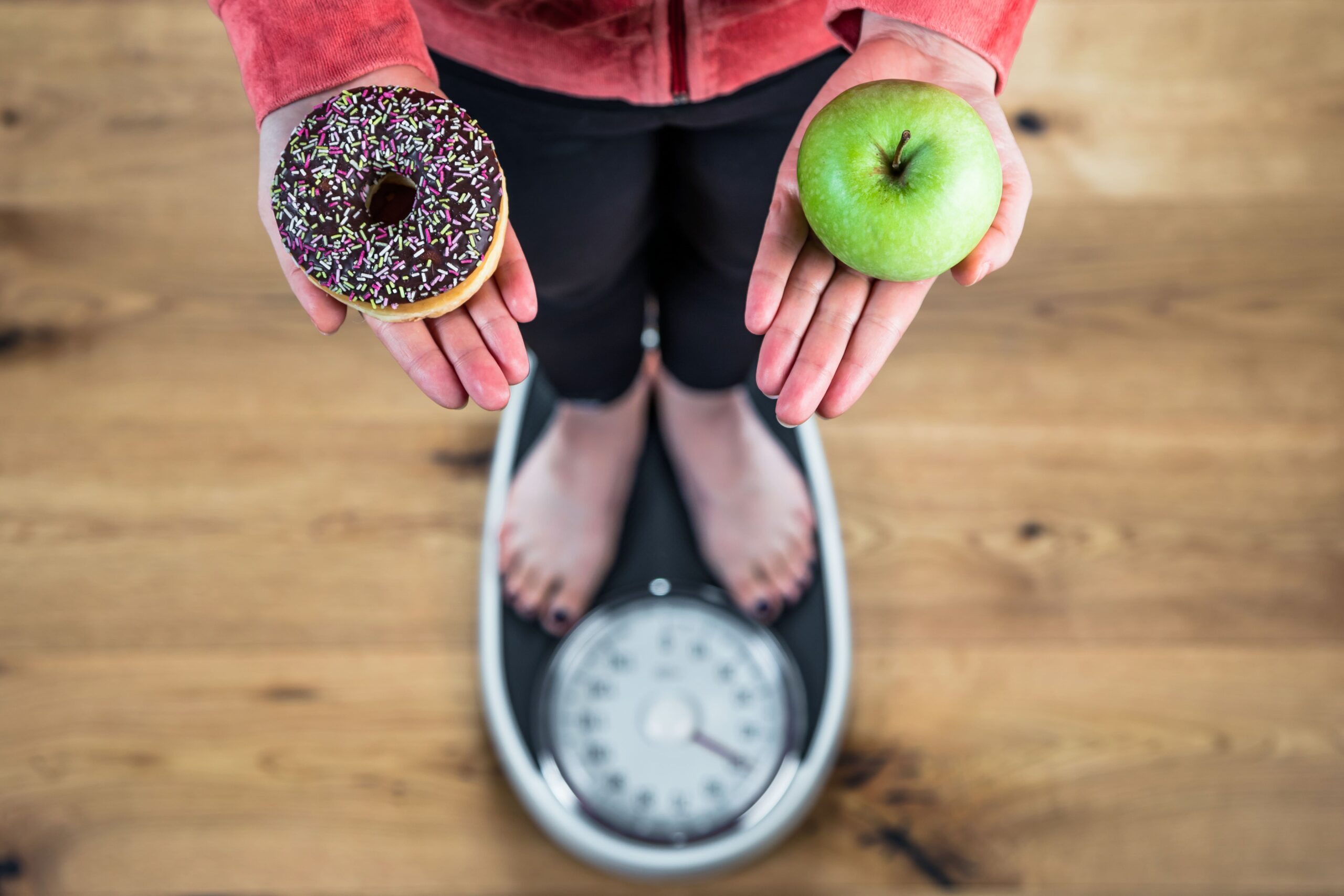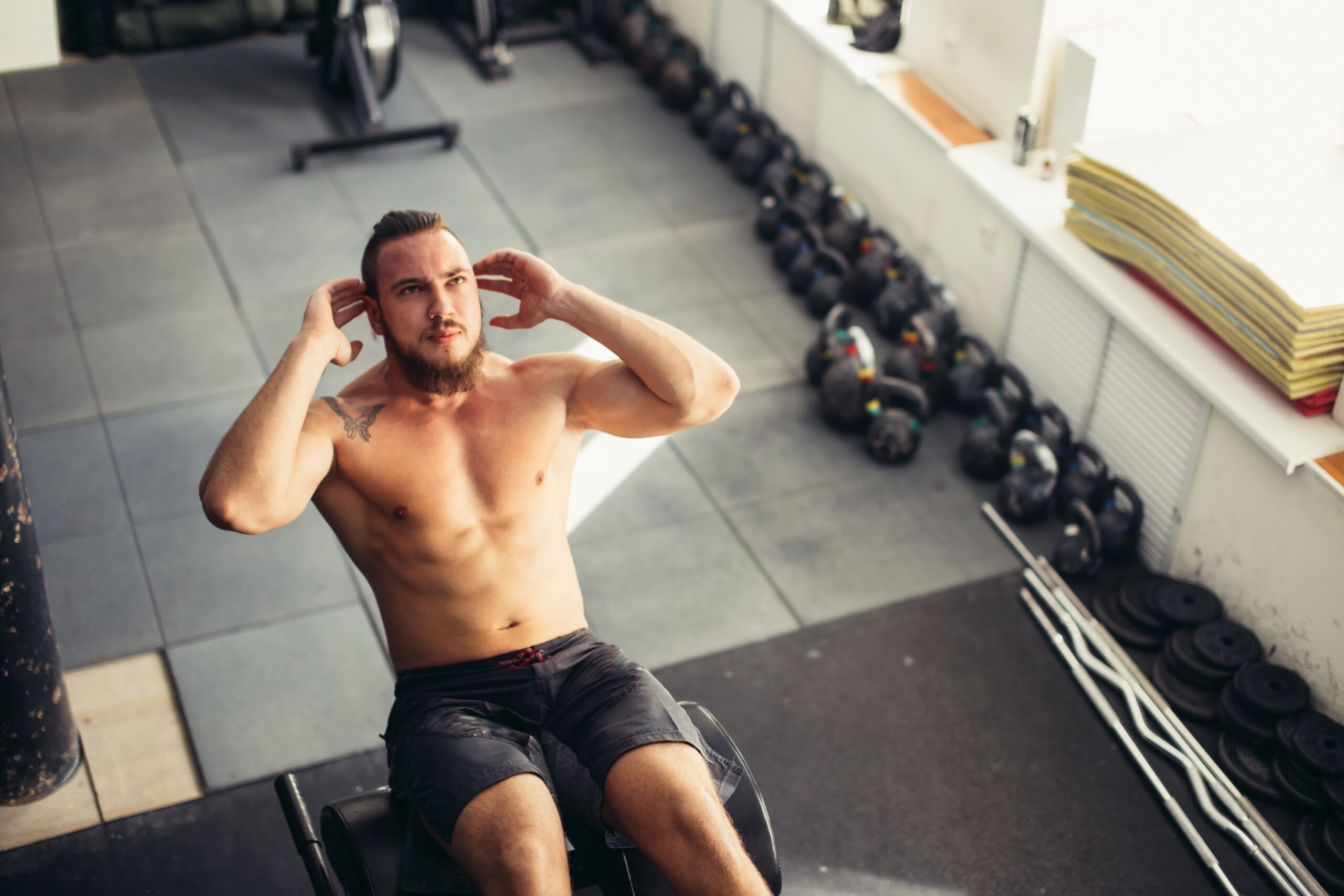As someone who’s transformed my own body without ever stepping foot in a gym, I can tell you that building muscle and losing fat simultaneously is absolutely achievable from the comfort of your own home. This process, known as body recompositing, needs a deep understanding of how our bodies respond to different stimuli.
By leveraging science-backed strategies and working smarter rather than harder, you can see impressive results.
The Foundation: Caloric Balance
The cornerstone of any body transformation is understanding energy balance. To lose fat, you need to create a calorie deficit – consuming fewer calories than you burn.
However, this deficit should be moderate to prevent muscle loss.
I recommend aiming for a 10-20% reduction in your daily calorie intake.
Interestingly, while building muscle typically needs a calorie surplus, it’s possible to gain muscle even in a slight deficit, especially if you’re new to resistance training. This is where proper nutrient timing and leveraging your body’s anabolic window come into play.
Protein: Your Muscle-Building Ally
Protein intake is crucial for both muscle growth and preservation. Based on current research, I suggest aiming for 1.6-2.2 grams of protein per kilogram of body weight daily.
This higher protein intake supports muscle growth and increases satiety, making it easier to maintain that calorie deficit we talked about earlier.
Good protein sources you can easily incorporate at home include:
- Lean meats (chicken breast, turkey)
- Fish (salmon, tuna)
- Eggs
- Greek yogurt
- Cottage cheese
- Legumes (beans, lentils)
- Tofu and tempeh
Hormonal Optimization
Hormones play a significant role in body composition. Testosterone, growth hormone, and insulin are key players in muscle growth, while cortisol can promote fat storage and muscle breakdown.
By optimizing your diet, exercise, and recovery, you can naturally enhance your hormonal profile to support your goals.
Some strategies to naturally boost useful hormones include:
- Getting adequate sleep (7-9 hours per night)
- Managing stress through meditation or deep breathing exercises
- Incorporating compound exercises into your workouts
- Eating a balanced diet rich in healthy fats and micronutrients
Crafting Your Home Workout Strategy
Now that we’ve covered the nutritional foundations, let’s build a workout strategy that maximizes results without fancy equipment.
Progressive Overload: The Key to Continuous Improvement
The principle of progressive overload states that to continue making gains, you must gradually increase the demands on your musculoskeletal system. With bodyweight exercises, this can be achieved by:
- Increasing repetitions
- Slowing down the tempo
- Decreasing rest periods
- Progressing to more challenging variations
For example, once you can perform 3 sets of 12 push-ups with ease, you might progress to diamond push-ups or start adding a pause at the bottom of each rep.
Compound Movements: Maximizing Efficiency
Focus on compound exercises that engage many muscle groups simultaneously. These movements save time and burn more calories and stimulate a greater hormonal response.
Key exercises to include in your home workout routine are:
- Push-ups (chest, shoulders, triceps)
- Pull-ups or inverted rows (back, biceps)
- Squats (legs, core)
- Lunges (legs, glutes)
- Plank variations (core, full body)
High-Intensity Interval Training (HIIT): The Fat-Burning Catalyst
Incorporate HIIT sessions to accelerate fat loss while preserving muscle mass. A simple protocol might involve 30 seconds of all-out effort followed by 30 seconds of rest, repeated for 15-20 minutes.
Exercises like burpees, mountain climbers, and jump squats are excellent choices for HIIT workouts.
Sample Home Workout Routine
Here’s a sample weekly workout routine you can follow:
Monday: Upper Body
- Push-ups: 3 sets of 10-15 reps
- Inverted rows: 3 sets of 8-12 reps
- Pike push-ups: 3 sets of 8-12 reps
- Tricep dips: 3 sets of 10-15 reps
Tuesday: Lower Body
- Bodyweight squats: 3 sets of 15-20 reps
- Lunges: 3 sets of 10-15 reps per leg
- Glute bridges: 3 sets of 15-20 reps
- Calf raises: 3 sets of 20-25 reps
Wednesday: HIIT
20-minute circuit:
- Burpees: 30 seconds
- Rest: 30 seconds
- Mountain climbers: 30 seconds
- Rest: 30 seconds
- Jump squats: 30 seconds
- Rest: 30 seconds
- High knees: 30 seconds
- Rest: 30 seconds
Repeat 5 times
Thursday: Upper Body
- Diamond push-ups: 3 sets of 8-12 reps
- Pull-ups or chin-ups: 3 sets to failure
- Handstand holds (against a wall): 3 sets of 30-60 seconds
- Plank to push-up: 3 sets of 8-12 reps
Friday: Lower Body
- Jump squats: 3 sets of 12-15 reps
- Bulgarian split squats: 3 sets of 10-12 reps per leg
- Single-leg deadlifts: 3 sets of 10-12 reps per leg
- Wall sits: 3 sets of 30-60 seconds
Saturday: Full Body HIIT
20-minute circuit:
- Push-ups: 30 seconds
- Rest: 15 seconds
- Bodyweight squats: 30 seconds
- Rest: 15 seconds
- Plank jacks: 30 seconds
- Rest: 15 seconds
- Lunges: 30 seconds
- Rest: 15 seconds
Repeat 5 times
Sunday: Rest and Recovery
- Light stretching or yoga
- Foam rolling
- Walking or other low-intensity activity
Remember to warm up before each workout and cool down afterward. As you progress, increase the difficulty of exercises, add more repetitions, or decrease rest times to continue challenging your body.
Nutrition: Fueling Your Transformation
Proper nutrition is the cornerstone of any successful body recomposition plan. Here’s how to improve your diet for maximum results:
Meal Timing: Strategically Fueling Your Body
While total daily calorie and macronutrient intake are most important, strategic meal timing can enhance your results. Consider these guidelines:
- Consume protein-rich meals every 3-4 hours to maintain muscle protein synthesis.
- Have a meal containing both protein and carbohydrates within 2 hours post-workout to support recovery and muscle growth.
- Experiment with intermittent fasting, which can enhance fat burning while preserving muscle mass when done correctly.
Micronutrients: Essential for Optimal Performance
Don’t neglect your micronutrient intake. Vitamins and minerals play crucial roles in metabolism, recovery, and overall health.
Focus on consuming a variety of colorful fruits and vegetables, lean proteins, and whole grains to confirm you’re getting a broad spectrum of nutrients.
Some key micronutrients to pay attention to include:
- Vitamin D: Important for bone health and muscle function
- Magnesium: Crucial for energy production and muscle recovery
- Zinc: Supports immune function and protein synthesis
- Omega-3 fatty acids: Reduce inflammation and support heart health
Sample Meal Plan
Here’s a sample meal plan to give you an idea of how to structure your nutrition:
Breakfast (7 AM):
- 3 egg whites + 1 whole egg scrambled
- 1/2 cup oatmeal with berries
- 1 tablespoon almond butter
Mid-Morning Snack (10 AM):
- Greek yogurt with a handful of almonds
Lunch (1 PM):
- Grilled chicken breast
- Mixed green salad with olive oil dressing
- Sweet potato
Post-Workout Snack (4 PM):
- Protein shake with banana and spinach
Dinner (7 PM):
- Baked salmon
- Steamed broccoli and carrots
- Quinoa
Evening Snack (if needed, 9 PM):
- Cottage cheese with cinnamon and a small apple
Remember to adjust portion sizes based on your specific calorie needs and goals.
Recovery: The Missing Link
Often overlooked, proper recovery is essential for both muscle growth and fat loss. Here’s how to improve your recovery:
Sleep: Nature’s Performance Enhancer
Aim for 7-9 hours of quality sleep per night. During deep sleep, your body releases growth hormone, which is crucial for muscle repair and fat metabolism.
Create a sleep-conducive environment by keeping your bedroom cool, dark, and quiet.
To improve your sleep quality:
- Stick to a consistent sleep schedule
- Avoid screens for at least an hour before bed
- Create a relaxing bedtime routine (e.g., reading, gentle stretching)
- Keep your bedroom cool (around 65°F or 18°C)
- Use blackout curtains or an eye mask to block out light
Stress Management: Cortisol’s Kryptonite
Chronic stress can sabotage your efforts by elevating cortisol levels, which promotes fat storage and muscle breakdown. Incorporate stress-reduction techniques like meditation, deep breathing exercises, or yoga into your daily routine.
Some effective stress management techniques include:
- Mindfulness meditation
- Progressive muscle relaxation
- Journaling
- Spending time in nature
- Engaging in hobbies you enjoy
Active Recovery: Keeping the Momentum
On rest days, engage in light activities like walking, stretching, or gentle yoga. This promotes blood flow, aids recovery, and can help burn extra calories without overtaxing your system.
Ideas for active recovery:
- 30-minute walk in nature
- Gentle yoga or stretching routine
- Swimming or water aerobics
- Light cycling
- Tai chi or qigong
Common Pitfalls and How to Avoid Them
- Overtraining: Listen to your body and allow for adequate rest between workouts.
Signs of overtraining include persistent fatigue, decreased performance, and increased susceptibility to illness.
- Undereating: While a calorie deficit is necessary for fat loss, too large a deficit can stall progress and lead to muscle loss.
Ensure you’re eating enough to support your activity level and muscle growth.
- Neglecting progressive overload: Continuously challenge yourself to avoid plateaus.
Keep a workout log to track your progress and confirm you’re consistently increasing the difficulty of your exercises.
- Inconsistency: Results come from sustained effort over time.
Stick to your plan even when motivation wanes.
Creating a schedule and treating your workouts as non-negotiable appointments can help maintain consistency.
- Ignoring form: Poor form can lead to injury and suboptimal results.
Take the time to learn proper technique for each exercise, even if it means starting with easier variations.
- Neglecting hydration: Proper hydration is crucial for performance and recovery.
Aim to drink at least 8-10 glasses of water per day, more if you’re very active or in a hot environment.
- Comparing yourself to others: Everyone’s fitness journey is unique.
Focus on your own progress rather than comparing yourself to others.
Take progress photos and measurements to track your personal improvements.
Adapting Your Approach
As you progress, you’ll need to adjust your strategy. Here are some ways to keep evolving:
- Periodically reassess your calorie needs as your body composition changes.
As you lose fat and gain muscle, your metabolic rate may change, requiring adjustments to your calorie intake.
- Introduce new exercise variations to continue challenging your muscles.
For example, progress from regular push-ups to decline push-ups or one-arm push-ups.
- Consider adding resistance bands or household items as weights to increase difficulty.
Filled water bottles, backpacks with books, or even sandbags can serve as makeshift weights.
- Adjust your macronutrient ratios based on your changing body composition and goals.
As you lean out, you may benefit from slightly increasing your carbohydrate intake to support intense workouts.
- Experiment with different training splits (e.g., push/pull/legs, upper/lower) to find what works best for your schedule and recovery needs.
- Incorporate deload weeks every 6-8 weeks to allow for full recovery and prevent burnout.
During a deload week, reduce the volume and intensity of your workouts by about 50%.
- Consider adding targeted mobility work to improve your range of motion and prevent injuries as you progress to more challenging exercises.
From Basics to Mastery
Mastering body recomposition at home is a process that builds upon basic principles. As you progress, you’ll develop a deeper understanding of your body’s responses to different stimuli, allowing you to fine-tune your approach for optimal results.
Practical Exercises to Reinforce Learning
- Keep a detailed food and workout log for two weeks, noting how different meals and exercises affect your energy and progress.
This will help you identify patterns and make informed adjustments to your plan.
- Experiment with different HIIT protocols and record which ones you find most effective and enjoyable.
Try varying work-to-rest ratios, exercise selection, and total workout duration to find your sweet spot.
- Practice progressive overload by setting weekly goals to increase reps or decrease rest times in your workouts.
This systematic approach will confirm continuous improvement and prevent plateaus.
- Try meal prepping for a week to understand how proper nutrition planning can support your goals.
This can help you maintain consistency in your diet and make it easier to track your calorie and macronutrient intake.
- Conduct a body composition assessment every 4-6 weeks using methods like progress photos, measurements, or bioelectrical impedance scales.
This will help you objectively track your progress and make necessary adjustments to your plan.
- Experiment with different recovery techniques such as foam rolling, contrast showers, or Epsom salt baths.
Keep track of how each method affects your muscle soreness and overall recovery.
- Practice mindful eating for a week, paying close attention to hunger cues, fullness signals, and how different foods make you feel.
This can help you develop a healthier relationship with food and improve your overall nutrition.
Frequently Asked Questions
Can I really build muscle without weights?
Yes, you can build muscle using just bodyweight exercises. Progressive overload and proper nutrition are key factors in muscle growth, regardless of whether you’re using weights or your own body weight.
How long does it take to see results from home workouts?
Results vary depending on factors like genetics, starting point, and consistency. However, most people start noticing changes in strength and endurance within 2-4 weeks, with visible physical changes often appearing after 6-8 weeks of consistent training and proper nutrition.
Is it possible to lose fat and gain muscle at the same time?
Yes, especially for beginners or those returning to exercise after a long break. This process, known as body recomposition, is achievable through a combination of resistance training, proper nutrition, and a small calorie deficit.
How many days a week should I work out to lose weight and build muscle?
For most people, 3-5 days of resistance training per week, combined with 2-3 days of cardio or HIIT, is enough for fat loss and muscle building. However, the exact frequency depends on your schedule, recovery ability, and goals.
What should I eat before and after a home workout?
Pre-workout, focus on easily digestible carbohydrates for energy, such as a banana or a slice of toast with honey. Post-workout, consume a meal with both protein and carbohydrates to support muscle recovery and replenish energy stores.
How can I stay motivated with home workouts?
Set clear, achievable goals, track your progress, vary your workouts to prevent boredom, and consider finding an accountability partner or joining online fitness communities for support and motivation.
Are bodyweight exercises effective for fat loss?
Yes, bodyweight exercises can be very effective for fat loss when combined with proper nutrition and a calorie deficit. High-intensity bodyweight circuits can burn a significant number of calories and boost your metabolism.
How do I know if I’m making progress with home workouts?
Track various metrics such as the number of repetitions you can perform, how long you can hold certain positions, your body measurements, progress photos, and how you feel overall in terms of energy and strength.
Can I get a six-pack from home workouts?
Developing visible abs depends on both building abdominal muscle and reducing overall body fat. While home workouts can help build core strength, diet plays a crucial role in revealing abdominal definition.
How do I prevent injury when working out at home?
Focus on proper form, start with beginner-friendly exercises and gradually progress, warm up before each workout, listen to your body, and allow for adequate rest and recovery between sessions.
Key Takeaways
- Body recomposition is achievable at home through proper nutrition, targeted exercises, and adequate recovery.
- Focus on compound bodyweight exercises and progressive overload to build muscle without equipment.
- Maintain a moderate calorie deficit with high protein intake to support fat loss and muscle growth.
- Incorporate HIIT for effective fat burning while preserving muscle mass.
- Prioritize sleep and stress management for optimal hormonal balance and recovery.



